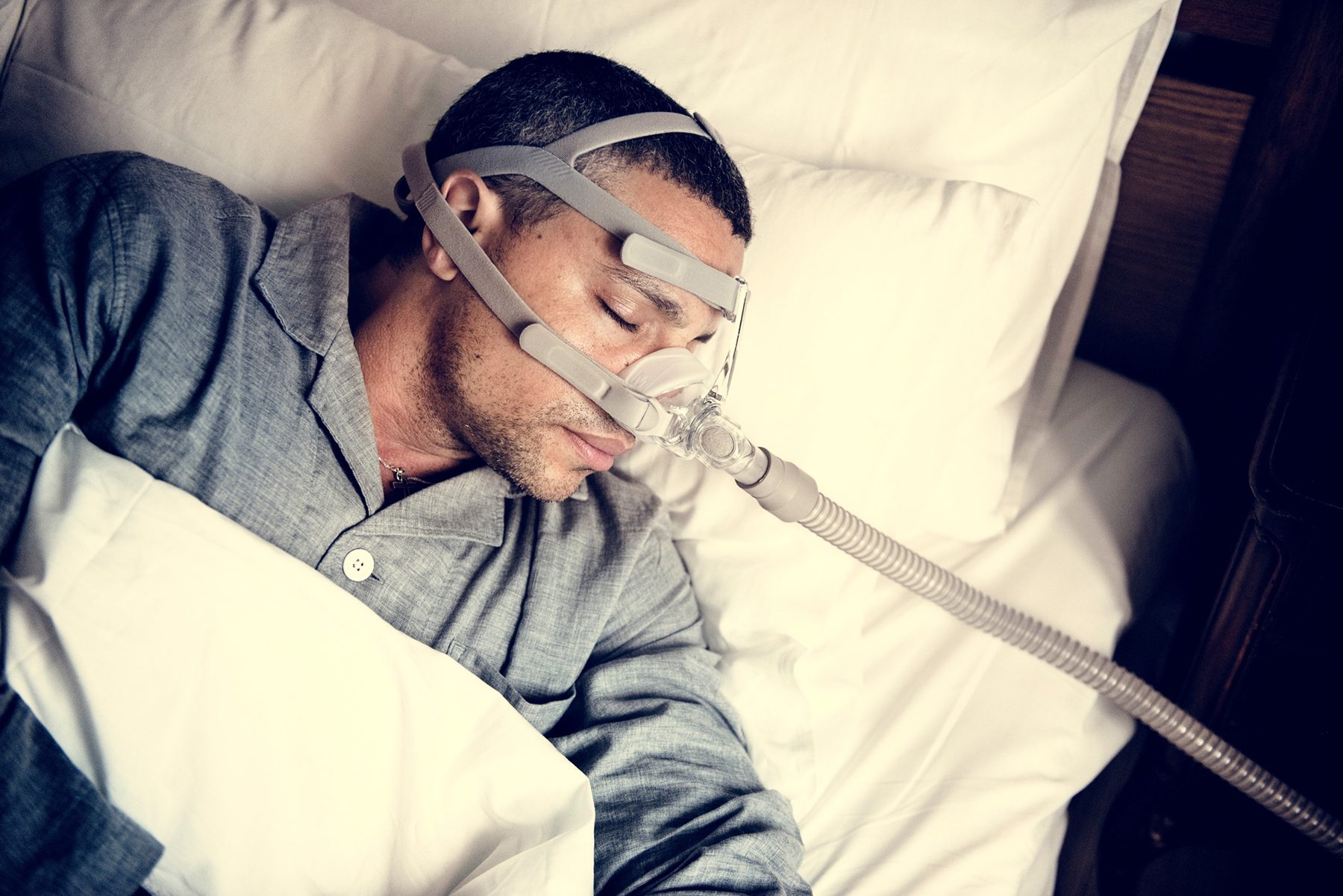Everyone’s CPAP journey is unique, the first three months are the most challenging as a patient becomes accustomed to setting up and wearing their mask as they sleep. We have an article that provide tips and tricks to help beginners survive their first 90 days and enjoy better sleep with their CPAP therapy.
So what are some common, and maybe not so common, issues that you may experience when using your CPAP therapy? First off, there’s no issue or complication we cannot solve. After more than 10+ years in business and our staff’s combined 80+ years in sleep medicine, we know how to help our patients, and we firmly believe that the benefits of CPAP therapy far outweigh any issues you may be experiencing. So let’s begin:
CPAP Dermatitis
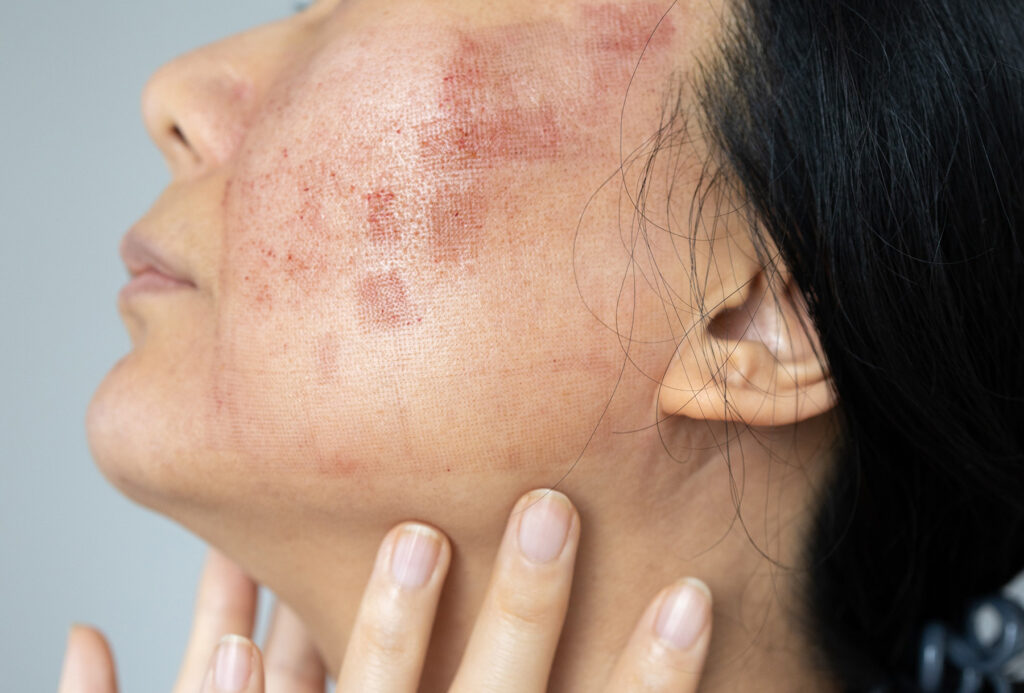
CPAP Dermatitis is a skin condition that commonly manifests itself by developing CPAP nose sores and irritating skin rashes. Dermatitis can have long-term complications and scarring, so it should be addressed as soon as you notice symptoms. Common symptoms of dermatitis include skin that turns red, itches, burns, swells, blisters, or even cracks, and will occur on or around the nose, mouth and cheeks (where the CPAP mask and straps are coming in contact with the skin). There are two types of Contact Dermatitis:
I. Allergic dermatitis. As the name applies, this is a dermatitis caused by an allergy. When skin comes into contact with an allergen, irritation will develop leading to hives, rashes, or other types of infection. This is a real issue. Fortunately, only a small number of patients may develop an allergy to the materials of the CPAP mask or accessories. Patients that already have an allergy to Latex, adhesive, or silicone are more likely to develop an allergy.
- SOLUTION: Cleaning your equipment is essential to maintaining clean and healthy looking skin. Our bodies naturally secrete oils, which transfer to the mask and headgear. It’s imperative that you regularly clean the mask parts and the cushion of the mask daily with soap and water or use ECPAP mask wipes.
- CAUTION: Also, keep in mind that the soaps and chemicals that you chose to clean your mask, may also be the culprit as to why one may develop an allergic reaction or sensitivity. The staff at Everything CPAP (ECPAP) recommends to only clean your CPAP mask and accessories with unscented soap or a 3-to-1 ratio of vinegar/water solation. We also recommend CPAP mask wipes.
II. Irritant Contact Dermatitis. This is when skin comes into contact with a product that causes irritation or chafing. This is different from allergic dermatitis, as Irritant Contact Dermatitis is not an allergic reaction. It can be caused by several factors, poorly fitted mask, improper cleaning of the mask, and moisture trapped in the mask.
- SOLUTION 1: If the mask is fitted too tightly or fitted improperly so its poorly distributed on your face, this will cause irritation. If this is the case, please call your DME company to have your mask refitted (if you’re located in Idaho, please call Everything CPAP).
- SOLUTION 2: If a patient is not regularly or thoroughly cleaning their mask, the residue of debris, skin oils and cleaning solutions will cause irritation over time. Please follow our cleaning instructions. Create a habit of cleaning your mask each evening, with proper manufacturer-recommended procedures, and don’t forget to thoroughly rinse your mask to remove any remaining soap or cleaning solutions.
- SOLUTION 3: Another cause of irritant dermatitis can be trapped moisture inside your mask but we’ll discuss that in more detail in the CPAP Rainout section below.
CPAP Skin Marks
Closely related to the symptoms of dermatitis, red skin marks are not considered dermatitis but just red marks on your skin from where the mask came in contact with your face. While it’s not as serious, it’s still unpleasant and unsightly.
- SOLUTION 1: Your mask may be fitted too tight, so loosen the straps. Red marks are fairly common even with a correctly fitted mask. Be patient, as sometimes it can take a few weeks for your body to acclimate to a CPAP mask on your face. Red marks should typically go away within 10-15 minutes of removing your mask.
- SOLUTION 2: If loosening the straps on the headgear breaks the seal between your mask and face, then it’s probably time for a new mask. Talk to your DME’s sleep technician to consider models that minimize touchpoints on the forehead and face.
- SOLUTION 3: Try using a mask liner, which is made to acts as a soft barrier between the silicone nasal cushion and face. The liner can reduce noisy air leaks and protect skin from excessive moisture or embarrassing red marks. The Remzzz CPAP Nasal liners are made from a special blend of natural cotton fibers which absorbs facial oils and moisture to prevent leaks and irritation around the cushion seal. (More information below.)
CPAP Rainout
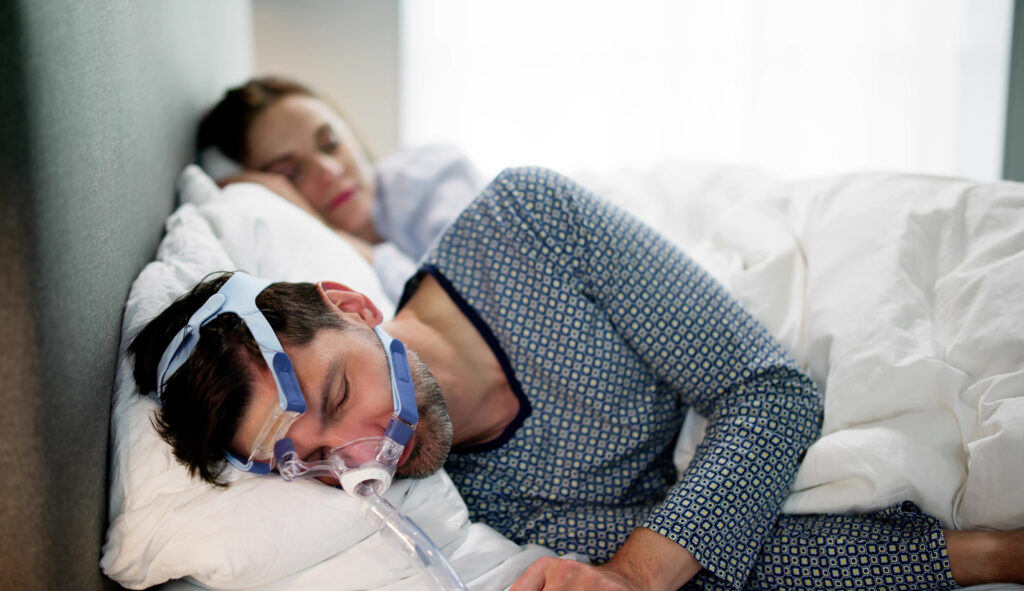
CPAP rainout occurs when heated air cools in your tubing and reaches your mask as water, causing you to get a damp face. It’s an uncomfortable sensation that can interrupt patient’s sleep rhythms, whether due to the feeling of water on their face or the ‘gurgling’ sound in the tube caused by condensation. This issue can be exacerbated by patients who have anxiety or claustrophobia; and often once awakened they will struggle to fall asleep again.
- SOLUTION 1: Heated tubing (which is ECPAP-recommended) will reduce rainout by heating the air in your tubing, preventing condensation to form. A heated tube can sustain that air’s optimum temperature until it reaches your mask. To see heating tubing for purchase, check out: HT15 15mm Heated Tubing for DreamStation 2, and the ClimateLine Air for the ResMed AirSense 10.
- SOLUTION 2: ECPAP sells several CPAP tubing wraps that keeps the air inside it warm. This is particularly helpful during the winter seasons and those who keep their bedroom temperatures cold any season. (See featured products below).
- SOLUTION 3: Adjustments are key to preventing CPAP rainout and the staff at Everything CPAP are more than equipped to tackle all rainout issues that can develop. Contact us today, if you are a resident or traveling through Idaho.
Featured Products:
- ResMed Standard Tubing Wrap: A smooth, heat-retaining cover for your standard tube, that is designed to reduce rainout. The wrap can also minimize drag on your bedclothes and your mask to provide a comfortable experience.
- Sunset Comfort Tubing Wrap: 6-foot Velour Tubing Wrap with Plush velour material that adds comfort while preventing rainout.
- Sunset Deluxe Tubing Wrap: 6-foot Nylon wrap with fleece lining that maximizes heat retention and reduces noise.

CPAP Nasal Congestion
Nasal congestion can be caused by the CPAP’s flow of dry, pressurized air through the sinuses. For those who experience frequent sinus infections, nasal congestion and stuffiness can become an issue. If you are experiencing either a dry, stuffy nose or an excess of nasal congestion from your CPAP mask, there are several causes, which include a poor fitted mask, lack of heated humidification, or nasal allergies.
- SOLUTION 1: Take a moment to see if your mask fits well on all sides, is distributed well, and is not too tight or too loose in any areas. You can adjust the straps as you need, but if you are still struggling to get it just right, please call our office to schedule another fitting. A proper fitted mask is imperative as a leaky mask can dry out your nose. *Note: If you are often tightening the straps to prevent leakage, the mask is not fitted properly.
- SOLUTION 2: Humidification is the key, which is why most CPAP machines feature a heated humidifier that works to keep nasal and oral pharynx moist. A heated humidifier will also open nasal passages, keeping you more comfortable throughout the night.
- SOLUTION 3: If you suffer from seasonal nasal allergies, it can be hard to breathe especially when you’re wearing your CPAP mask. Talk to your physician so you can effectively treat your allergy symptoms, including several varieties of antihistamines and nasal sprays.
CPAP Headaches
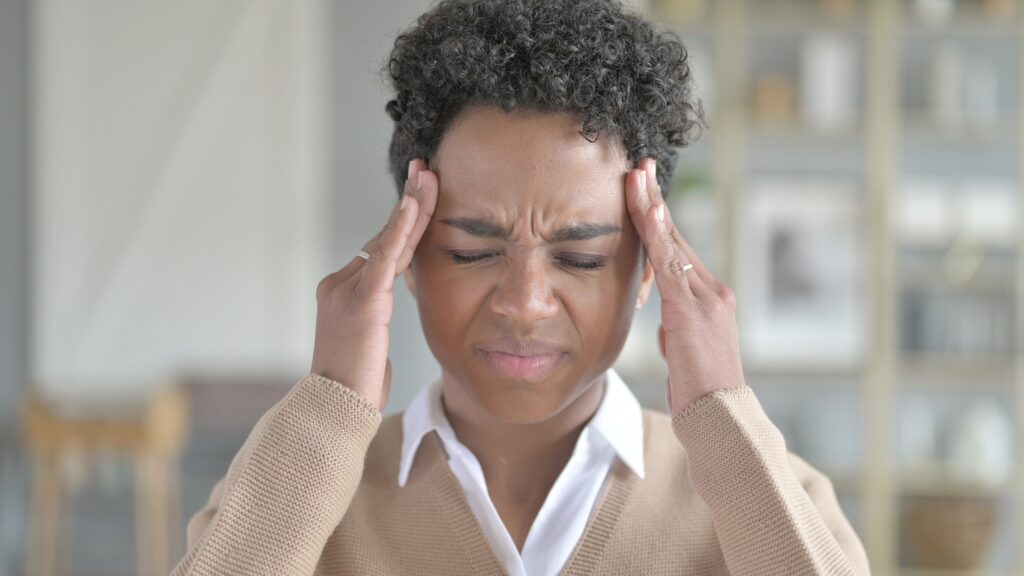
While this issue is less common, as CPAP therapy usually reduces headaches caused by sleep apnea, some patients may notice an increase, especially if those more prone to headaches and migraines. CPAP induced headaches can range from mild discomfort to severe migraines, depending on the cause.
- SOLUTION 1: Again, an ill-fitted or overly tightened mask can cause unnecessary pain and headaches, especially if it’s cutting off circulation. Adjust the straps accordingly or call your DME company for a professional fitting.
- SOLUTION 2: If pressure settings are not calibrated properly for the patient, this can lead to discomfort and headaches. Call your physician and/or your DME company to review and adjust.
- SOLUTION 3: Sinus congestion or allergies can cause headaches as well, so see above for more information.
CPAP Dry Eyes
CPAP Dry Eyes is often caused because the CPAP mask is blowing air up the sides of your cheeks and vents directly into your eyes. This can be uncomfortable, annoying and interrupt your sleep quality.
- SOLUTION 1: I know this is starting to sound repetitive but a poorly-fitted mask is often the culprit in many of these uncomfortable scenarios. We urge you to reach out to our staff clinicians at Everything CPAP to refit your mask or try another.
- SOLUTION 2: Since leaking air is the cause, you can also try a mask liner to improve the seal. At Everything CPAP, we recommend the RemZzzs CPAP Nasal CPAP Mask Liners.
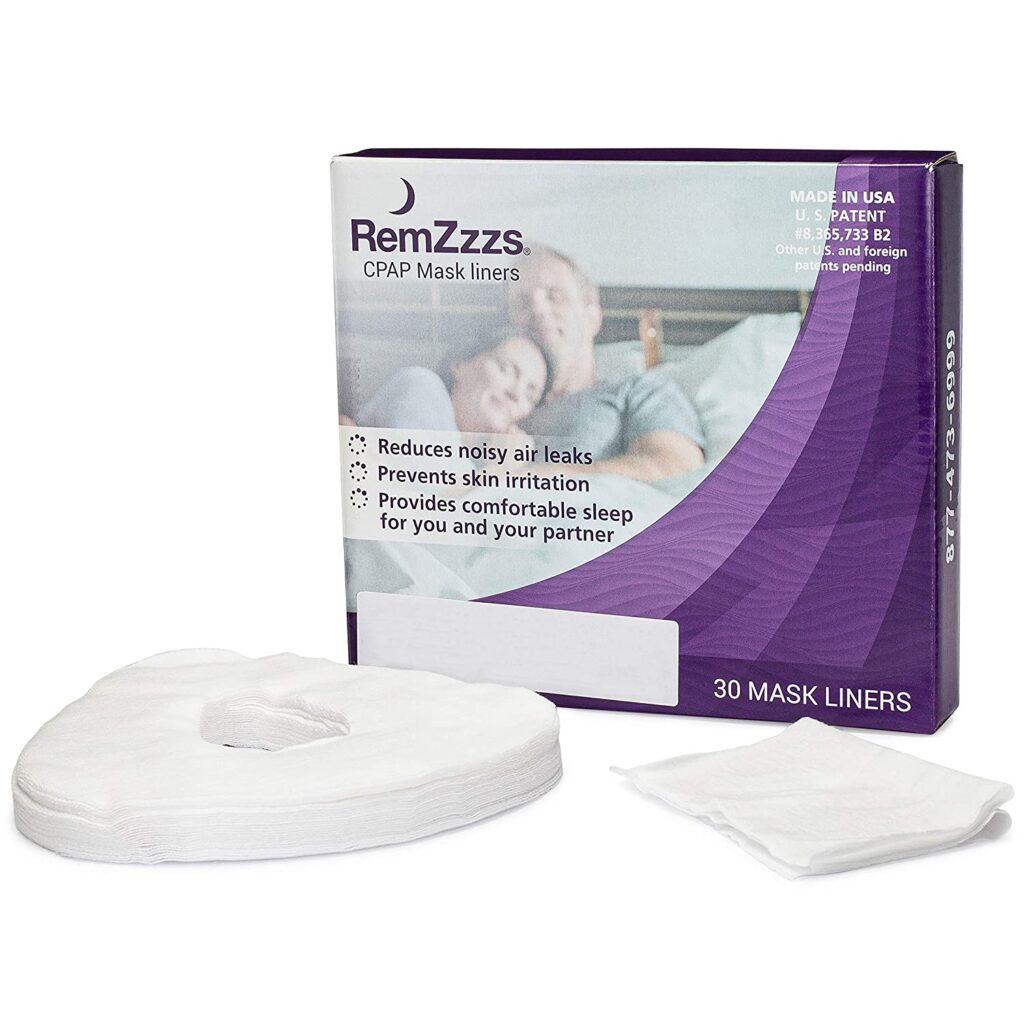
The RemZzzs CPAP Nasal CPAP Mask Liner acts as a soft barrier between the silicone nasal cushion and face. The liner addresses several common CPAP therapy side effects. Use the liner to reduce noisy air leaks and protect skin from excessive moisture or embarrassing red marks. Made from a special blend of natural cotton fibers, this liner absorbs facial oils and moisture to prevent leaks and irritation around the cushion seal.
CPAP Hair Loss
Here at Everything CPAP, we have not yet had any patients complaining of hair loss, but when you search online, some who are prone to hair loss have asked this question. The answer is there is no definitive evidence or study linking CPAP therapy directly to hair loss.
On CPAP.com, one user commented, “One problem I didn’t see mentioned here is hair damage from mask straps. I’ve tried many different CPAP masks over the past 8 years and have had continual problems with straps causing my already-thin hair to break and pull out.”
For those who have reported hair-related concerns, hair loss or breakage usually relates to friction or pressure from the mask straps. That continual pressure or rubbing of the scalp as you move in your sleep may be the cause of minimal hair loss in those areas. This is not a universal issue and rather uncommon, but this could be an issue for those with thin hair, alopecia, or patients undergoing cancer treatments.
- Solution 1: Uh-oh, here we go again. A tight-fitting masks or overly tightened straps may exacerbate this issue. Call Everything CPAP for mask fit questions and concerns.
- Solution 2: If you have long hair, try putting your hair up in a ponytail before putting on your headgear. This could stabilize the headgear straps and minimizes friction.
- Solution 3: Choose a mask with less headgear, with slimmer straps or fewer straps. We recommend the Philips DreamWear Nasal Pillow Mask. This minimalistic sleep apnea mask features a soft 100% silicone frame and a lightweight slip-resistant headgear that rests gently above the base of the neck.
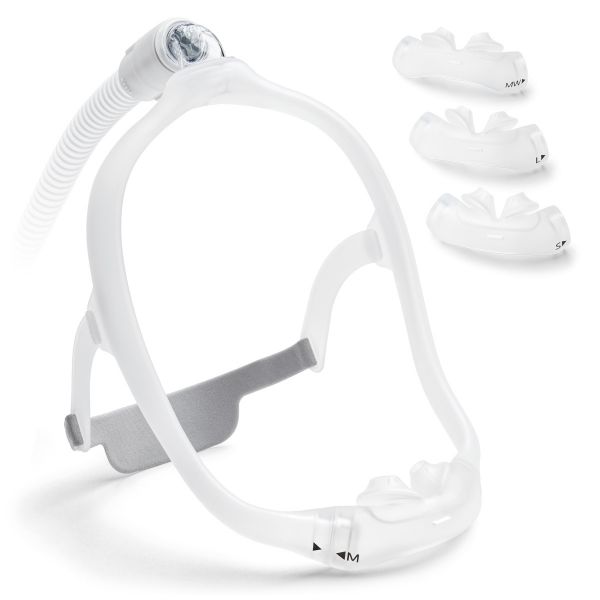
Philips DreamWear Nasal Pillow Mask
Like wearing nothing at all: DreamWear’s unique design offers one mask with three cushion options to give patients the ability to choose the interface that works best for them. Its remarkable design directs airflow through the frame so patients can sleep comfortably. The minimal contact, under-the-nose cushion prevents red marks, discomfort or irritation in the nostrils or on the nose bridge.
Freedom of movement: DreamWear users experienced more freedom of movement throughout the night than with their current prescribed mask.¹⁻³ Unrestricted by cumbersome tubing, patients can sleep in any position they desire – on their stomach, side, or back.
CPAP Users with Facial Hair
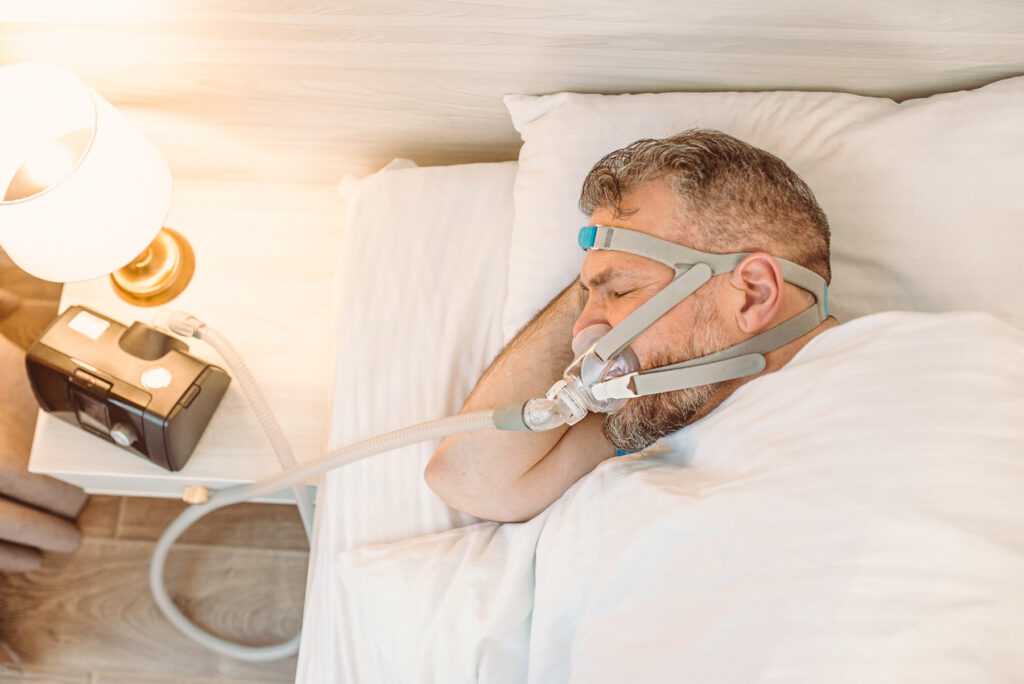
There is no issues or contraindication for CPAP users that have facial hair, beards or mustaches. We take a preventative approach when our patients come in with facial hair, or decide to grow one later, by explaining that various masks work better for bearded men. Why? Facial hair can prevent a secure seal, causing leakage and all the concerns that come with leaking masks we discussed already in this article.
- SOLUTION 1: Choose the right mask for your facial hair. This is where our expert clinicians at Everything CPAP come in, as we have thoroughly vetted and tested our products on various types of patients. For those with facial hair we recommend CPAP nasal pillow masks, as these create the least amount of contact with the face and offer the lowest profile.
- SOLUTION 2: If the mask doesn’t work for your facial hair, try and try again. We are committed to ensuring a good night’s sleep therefore, our patients receive the care they deserve and the help they need to be successful in treating their sleep apnea. That is why we offer our 30-Day Mask Fit Guarantee.
Our 30-Day Mask Fit Guarantee: Everything CPAP offers an unconditional Mask Fit Guarantee with over 200 mask options, proper fitting by our staff at our initial visit as well as ongoing support for our patients. We don’t always get it right the first time, so that is why we offer a full 30 days (or nights) so patients can try out their mask and swap out until we get it right. Remember the goal is to provide our patient’s a better night’s sleep and improved health.
We are here to help!
In conclusion, if you are having an issue, a concern, or a health-related complication when using your CPAP machine or mask, we are here to help from the first day and throughout your CPAP journey. If you have a question or issue we did not address in this blog, please look at our Therapy FAQ page, and send us a question on the form on that page.


